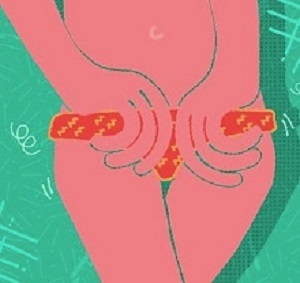 Almost all women with typical urinary complaints and a negative culture nevertheless do have an infection with E. coli, found a University of Ghent study.
Almost all women with typical urinary complaints and a negative culture nevertheless do have an infection with E. coli, found a University of Ghent study.
Symptoms of a urinary tract infection (UTI) such as cystitis are common in women but, in around a quarter of cases, no infection is found using standard testing.
Symptoms of a urinary tract infection (UTI) such as cystitis are common in women but, in around a quarter of cases, no infection is found using standard testing.
However, new research, using a more sensitive test, found evidence of bacterial infection in almost all women with UTI symptoms, including those where no bacteria were found with standard testing.
The study, led by Dr Stefan Heytens from University of Ghent, Belgium, supports the idea that testing is unnecessary for women with symptoms of an uncomplicated UTI. UTI symptoms account for between 2% and 5% of women's GP appointments. In 60-80% of cases, urine testing reveals a bacterial infection.
Testing involves using laboratory techniques to detect bacteria in the urine. These women may be offered antibiotics such as nitrofurantoin, trimethoprim or fosfomycin. However, doctors have assumed that women with negative tests do not have a bacterial infection. In the past, this group of women may have been diagnosed with unexplained 'urethral syndrome', which some researchers have suggested could be psychosomatic.
Heytens, who is a practicing GP and a researcher at the department of family medicine and primary health care at the University of Ghent, explained: "A substantial percentage of women visiting their GP with symptoms of a UTI, who test negative for a bacterial infection, are told they have no infection and sent home without treatment.
"On the other hand, women with a positive test might be given a short course of antibiotics to treat their infection."
The new research involved 308 Belgian women, including 220 who were visiting their GP for UTI symptoms and 86 healthy volunteers. All the women gave urine samples.
Urine samples were tested in the standard way to see whether any bacteria grew. They were also tested using a technique called quantitative polymerase chain reaction, or qPCR. This technique is very sensitive and can be used to detect tiny quantities of DNA that come from bacteria which can cause UTIs, such as Escherichia coli (E. coli) and Staphloccocus saprophyticus (S. saphrophyticus).
Among the women with UTI symptoms, standard testing detected bacteria in 80.9% of urine samples. But the qPCR test found evidence of E. coli in 95.9% of samples and S. saphrophyticus in 8.6%. Combining the results of both tests found evidence of an infection in 98.2% of women with symptoms.
In the women without symptoms, standard testing picked up E. coli in 10.5% of samples and qPCR picked up E. coli in 11.6%.
Heytens said: "In this study, we used a more sensitive test to look for bacteria that commonly cause UTIs. We found E. coli in nearly all women complaining of symptoms, even if they had a negative traditional urine culture. This suggests that if a woman has these symptoms, she probably does have a UTI.
"Our findings support previous research which indicates that traditional testing may not be helpful in uncomplicated UTIs. However, traditional urine culture tests may still have a role to play if treatment fails or if there are signs and symptoms of a more complicated UTI.
"What we don't yet know is whether all women with these symptoms would benefit from a course of antibiotics."
Heytens says the findings need to be confirmed in further research. He and his colleagues also plan to investigate whether women with UTI symptoms but a negative urine test would benefit from treatment with antibiotics, and whether they can use qPCR to detect other types of bacteria which might be causing UTIs in rarer cases.
Abstract
Objectives: Our objective was to examine whether or not women with symptoms of a urinary tract infection but with a negative culture (20%–30%) do have an infection.
Methods: We performed quantitative PCR (qPCR) for Escherichia coli and Staphylococcus saprophyticus, on top of a standard culture, in urine samples from 220 women with dysuria and/or frequency and/or urgency and from 86 women without symptoms. For symptomatic women, qPCR was also carried out for four sexually transmitted agents.
Results: In the symptomatic group, 80.9% (178/220) of the urine cultures were positive for any uropathogen and 95.9% (211/220) were E. coli qPCR-positive. For the control group, cultures for E. coli and E. coli qPCR were positive in, respectively, 10.5% (9/86) and 11.6% (10/86). In the symptomatic group, qPCR yielded 19 positive samples for S. saprophyticus qPCR, one positive sample for Mycoplasma genitalium and one for Trichomonas vaginalis.
Conclusions: These findings suggest that almost all women with typical urinary complaints and a negative culture still have an infection with E. coli.
Authors
S Heytens, A De Sutter, L Coorevits, P Cools, J Boelens, L Van Simaey, T Christiaens, M Vaneechoutte, G Claeys
[link url="https://www.sciencedaily.com/releases/2017/04/170428084433.htm"]European Society of Clinical Microbiology and Infectious Diseases material[/link]
[link url="http://www.clinicalmicrobiologyandinfection.com/article/S1198-743X(17)30209-4/fulltext"]Clinical Microbiology and Infection abstract[/link]
